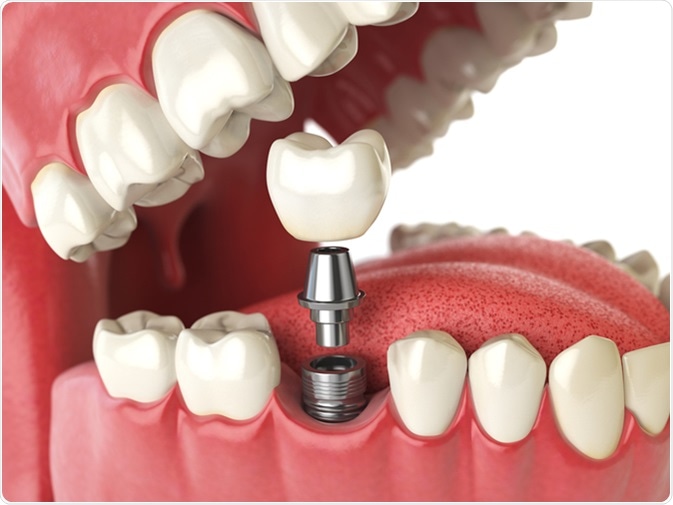Know about Dental Implants and RestorationsPosted by James Cooper on March 23rd, 2021
Dental implants popular today were invented in 1952 by a Swedish orthopedic surgeon, Per-Ingvar Brånemark. Today, in dentistry implants have become the standard of care for prosthetic replacement of missing teeth. In a dental implant, a surgical fixture is placed into the jawbone and allowed to blend with the bone over the duration of few months. The dental implant basically works as a replacement for the root of a missing tooth. This "artificial tooth root" helps to hold in place the replacement tooth or bridge. The closest thing to imitate a natural tooth is a dental implant fused to the jawbone since it stands on its own with great stability without affecting the nearby teeth. "Osseointegration" is the process of fusion between the dental implant and jawbone. Dental implants primarily are made of titanium and allow integration with bone without being identified as a foreign object in our body. Technology and science have progressed greatly over time and have improved the outcomes of dental implant placement. The success rate for dental implants is close to 97%. Dental Implant Cape Girardeau may be applied for the replacement of several teeth, all of the teeth, or a single tooth. In dentistry, the aim of teeth replacement is restoring function as well as aesthetics. There have been two different types of dental implants historically. They are:
Usually, there are three methods of tooth replacement:
The more affordable option for replacement teeth is dentures but do not offer desirable result because of the inconvenience caused by a removable appliance in the mouth. Moreover, dentures can affect one's taste of food. The more common restorative method was dental bridgework before the origin of dental implant treatment. The dependence on existing natural teeth for support is the main disadvantage to bridgework. Implants are held in position by bone and do not affect surrounding natural teeth. A dental surgeon makes a clinical assessment of whether the patient is a good candidate for a dental implant after examination of the area for the dental implant. Some factors to be considered for dental implants include
There are great benefits of a dental implant for tooth replacement over the other options. The main feature of dental implants is that the missing teeth can be replaced without affecting or altering the adjacent teeth. Moreover, dental implants can integrate into the bone structure, and hence are very stable and have the look and feel of one's natural teeth. There are areas in which implants can assist in other dental procedures though the primary function of dental implants is teeth replacement, like dental implants can offer support to a removable denture with a more secure and comfortable fit. Like it? Share it!More by this author |



